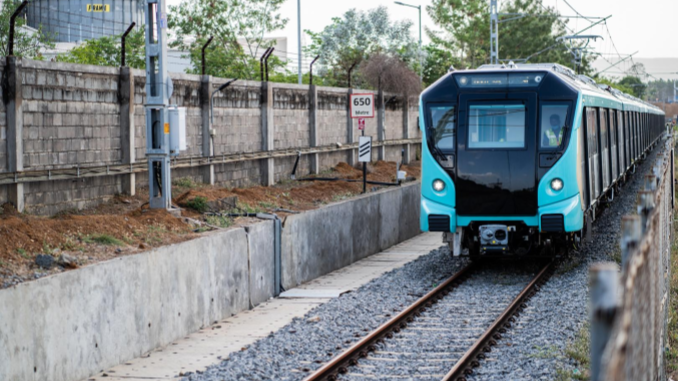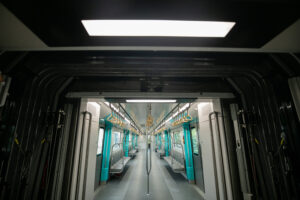
In 2018, the mobility industry accounted for 29% of global greenhouse gas emissions, making it the leading contributor, even to date. This presents a significant issue, considering that climate change is currently one of the most critical challenges our planet faces.
More Details:
The situation becomes even more concerning when we consider that the world’s population is projected to reach 9.7 billion by 2050, leading to a significant increase in global traffic. The mobility sector will play a vital role in achieving sustainability targets and adopting Alstom’s eco-design-based production methods will help attain this objective.
As a global leader in smart and sustainable mobility, Alstom is committed to reducing the carbon footprint of transport systems. The company actively enforces resilient climate policies and advocates for low-carbon practices.
Alstom’s efforts revolve around designing mobility solutions that lay the groundwork for a sustainable future in transportation, leading communities towards a low-carbon trajectory. Additionally, Alstom is fully dedicated to promoting carbon neutrality in transportation and has embraced a comprehensive “Climate and energy transition strategy.”
Alstom has developed its eco-design approach that aims to incorporate environmental considerations during the design phase of a product, service, or building, with the primary goal of limiting the lifetime environmental impact. This approach involves analysing the product lifecycle from design to recycling to predict its effects on the environment at each stage.
The incorporation of eco-design methods by Alstom is based on three fundamental elements: considering a product lifecycle from multiple perspectives, considering the expectations of all stakeholders (clients, the public, etc.) and the continuous improvement of the solutions developed. All these solutions are designed to integrate environmental targets (energy, use of renewable resources, noise, emission levels etc.) and achievements are monitored throughout the development process.
The 5 axes of Alstom’s eco-design policy (illustrated by typical design features) are:
- Clean materials: Control of materials and substances used by our suppliers in compliance with the strictest standards
- Energy Efficiency: Electric braking optimised to recover energy
- Reduction of air emissions: Reduces particle emissions of the fleet
- Noise Reduction: Electromagnetic noise reduction of the engine and natural cooling to eliminate fan noise
- End of Life Management: Design for easy dismantling, repairable parts, supply of dismantling manual
The Mumbai’s Colaba-Bandra-SEEPZ Metro line 3 (Aqua Line), indigenously designed, manufactured, and commissioned by Alstom is testament to this supreme ecological principle.

Currently, Alstom is developing, producing, and commissioning 31 lightweight, fully equipped modern passenger train sets with 8 cars each for Mumbai’s first totally underground metro project. According to estimates, these metro trains will cut down on overall traffic by 35% and air & noise pollution.
Alstom’s Metropolis train sets are the industry standard in terms of energy-efficient, safe operations, with a proven track record, low lifecycle costs, and a great attention to the passenger experience.
These metro trains are a testament to the company’s superior eco-design principle, with 96% of the mass of materials and components used being recyclable, and 99% recoverable. Also, no prohibited substances have been used in this project, as per the applicable regulations.
Way forward:
To meet the challenges of sustainable transport, Alstom has made a conscious decision of making eco-design a central part of its business. In 2021/22, 51% of newly developed solutions were covered by an eco-designed process, including circular economy aspects. By 2025, the company aims to develop all its products to be 100% eco-designed.
Committed to limiting the environmental impact of its operations in India and worldwide, Alstom has set for itself an objective of 90% and 75% of waste recovery rate and recycling rate, respectively. Alstom’s operations in India have largely exceeded this target with rates of 98%*.
Spearheading the sustainable railway manufacturing in India, Alstom is also working closely with Indian Railways to achieve the ambition of becoming the world’s first 100% green railway with net-zero emission by 2030.
A pioneer at introducing various solutions to transition to green mobility in India, Alstom is the only company with operational hydrogen-powered trains in passenger service.
Source: Alstom | Images Credit: Alstom

